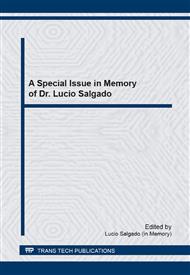p.298
p.305
p.311
p.319
p.325
p.331
p.337
p.343
p.350
Recycling of Steel AISI 52100 Gotten by the Route of Powder Metallurgy
Abstract:
The AISI 52100 steel is a material widely used in the industry due to its high fatigue resistance, dimensional stability, high hardness and wear resistance. This steel is used for production of ball bearings, stamping tools, etc. In case of production of ball bearings and its track this material is spherodized because, due to its high content of carbon, about 1%, it has high mechanical strength making it impossible to cold forming. To obtain a wear resistant surface, after forming, this material is hardened and tempered. Normally to obtain the AISI 52100 steel, arc electric melting furnace is used. This work aims the reuse of AISI 52100 steel by powder metallurgy route, starting from the machined chips using high energy mill (planetary) to obtain the powder. Then, the powder was uniaxially pressed into a press with a load of 4 tons, to form the specimen, later on pressed in an isostatic press at a pressure of 300MPa to obtain a better densification. To analyze the powder morphology and the phases obtained after sintering, was used a scanning electron microscope and X-ray diffraction to calculate the crystallite size. It was verified that with more than 10 hours of grinding, the crystallite size does not change significantly, the particles gained rounded shapes with a size distribution between 30 and 5μm. The microstructure obtained by the two routes was nearly identical after sintering.
Info:
Periodical:
Pages:
325-330
Citation:
Online since:
September 2014
Keywords:
Price:
Сopyright:
© 2015 Trans Tech Publications Ltd. All Rights Reserved
Share:
Citation:


